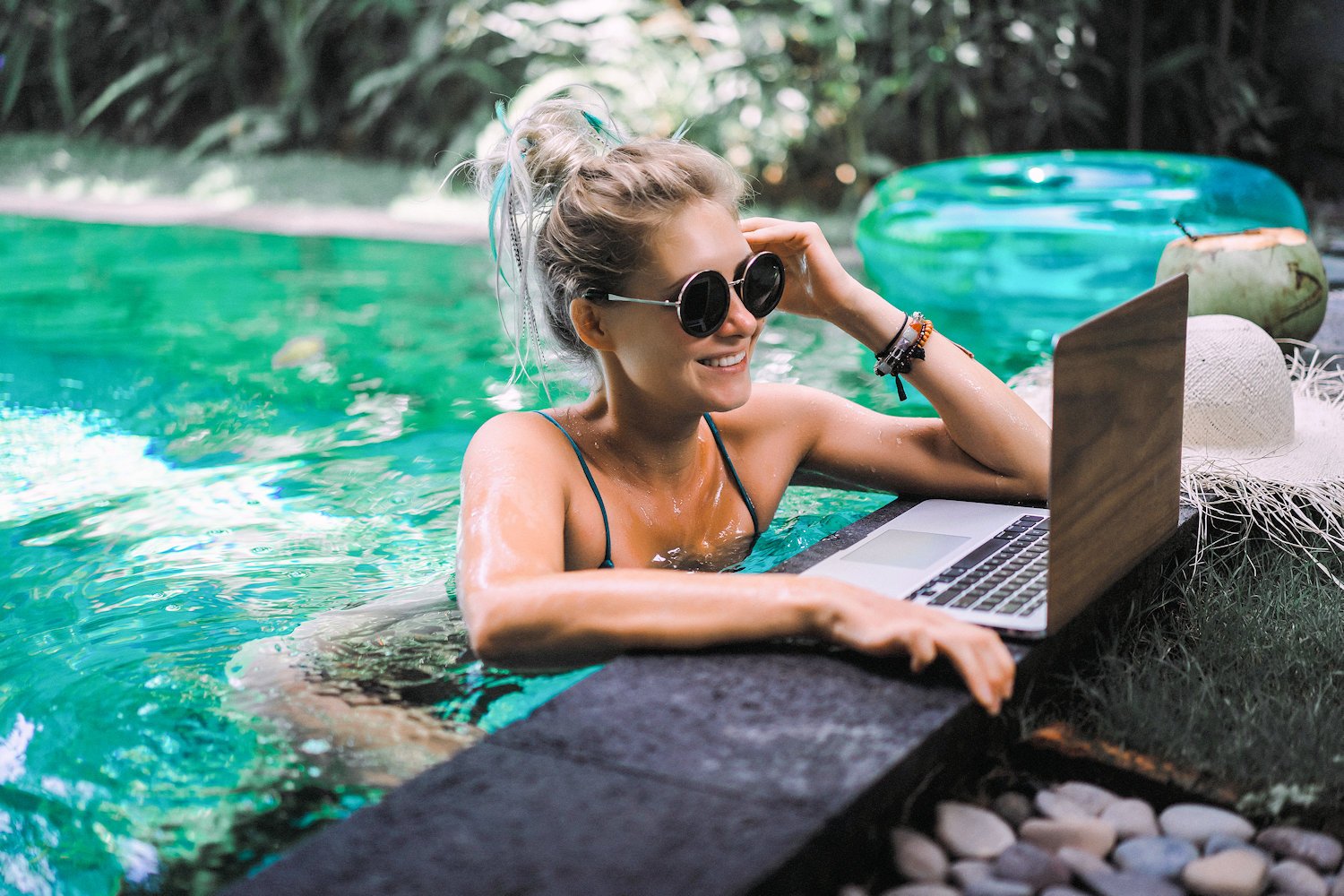
The air is warmer. The days are longer. You're tired of looking at your pool cover.
This means it's time to open your swimming pool. If you're like many of us, you've been counting the days to strip your pool of its cover, take care of the water, and dangle your feet over the side.
We can't wait for you to jump in your pool either, so here is a pool opening checklist to ensure the process of opening your pool goes "swimmingly!"
Let's get ready for tons of fun under the sun and in the pool for the next six or seven months.
#1: Take Your Cover Off
Drain off any accumulated water on the cover. Once removed, clean your cover to prevent sticking and odors. Store in a dry place, free of debris, and protected from the sun and weather.
#2: Check Your Water Level
Your pool should be filled to the middle of the skimmer opening to allow for proper circulation.
#3: Check Your Pump, Skimmer Basket, and Filter
Make sure everything is in good working order and clean as necessary.
#4: Get Your Water Tested
Circulate your pool water 24 to 48 hours before taking a water sample. Use a clean plastic container to scoop about one quart of water. Do this from elbow-depth (away from skimmers and returns). Seal the container and bring it to us for FREE testing and computerized analysis.
You'll get accurate results almost instantly. We will then give you personalized instructions for starting your pool with step-by-step instructions.
#5: Get Your Chemicals
Do a quick inventory to see what you need. Then come see us. We can help you get all the chemicals you need for opening your pool and for the season:
- Shock
- Algaecide
- Clarifier
- Enzymes
- Water Balancing Chemicals
#6: Get Your Cleaning Accessories
While you're in the store, you can pick up a skimmer net, brush, and vacuum if you need them. Don't have an automatic cleaner? We can help with that, too!
#7: Grab Any Maintenance Essentials
Need gaskets, o-rings, etc? We can help you with everything you need.
#8: Test Sanitizer and pH
You can test your sanitizer and pH levels on your own using BioGuard Test Strips. Check free chlorine, total bromine residuals, pH level,s and Total Alkalinity. Use the following chart to determine proper levels.
- Free Chlorine residual: 1.0 to 4.0 ppm
- Total Bromine residual: 1.0 to 4.0 ppm
- pH: 7.4 to 7.6 is ideal range (7.2-7.6 is acceptable)
- Total Alkalinity: 125 to 150 ppm (or 80 to 150 ppm for saltwater pools)
- Calcium Hardness (plaster and SoftSwim® pools): 200 to 275 ppm
- Calcium Hardness (all other types): 175 to 225 ppm
#9: Practice Routine Maintenance
Finally, have a plan in place to maintain your pool regularly.
Final Thoughts
Open your pool right in the spring means tons of summer fun! These easy steps ensure and easy opening. If you need help, our service department offers repairs, pool openings and closing, and weekly pool service. Contact us today if you are interested!

